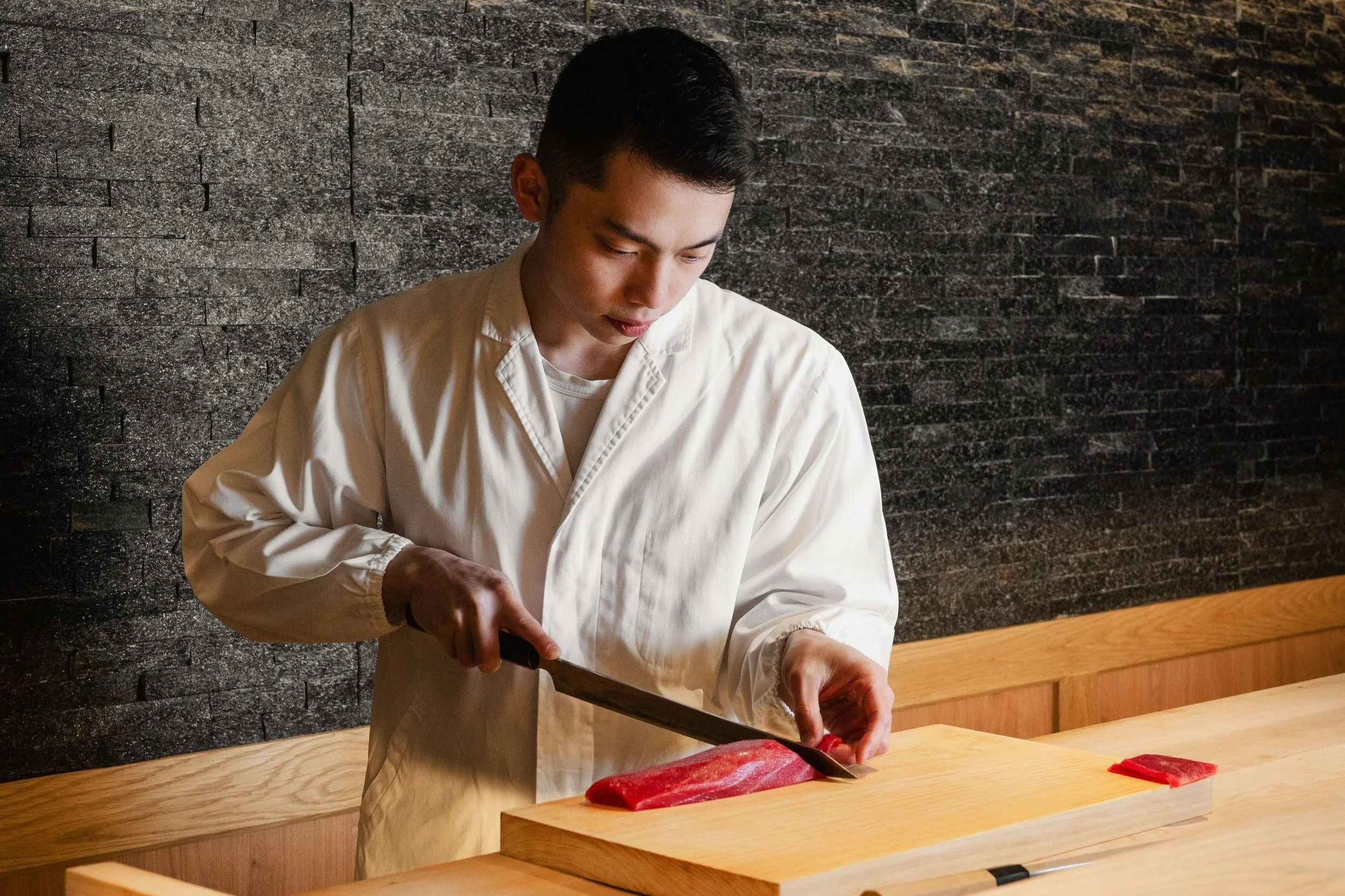Precision in Every Slice: The Knife Skills Behind TAKU’s Sushi
When diners sit down at TAKU’s Omakase counter, one of the first things they notice—beyond the quiet elegance of the space—is the precision. Every slice of fish, every movement behind the counter, is executed with clarity and intent. But what often goes unnoticed is the mastery of knife skills that lies beneath that calm surface.
In Japanese cuisine, the knife is more than a tool; it’s a philosophy, a language of respect for ingredients, and an essential element in achieving balance and beauty on the plate.
Decades of Discipline in Every Cut
The sushi chefs at TAKU undergo years—often decades—of rigorous training to refine their technique. Unlike Western kitchens, where speed and power can be emphasised, Japanese knife work focuses on delicacy, control, and understanding the grain of each ingredient.
Whether it's slicing otoro (fatty tuna) against the muscle fibres to preserve its melt-in-the-mouth texture or preparing ika (squid) with intricate scoring to enhance tenderness, each motion is calculated. Even the angle of the blade changes depending on the fish being used or the final texture desired.
This is part of what sets apart an Omakase experience of our level—and a key reason why TAKU continues to retain its Michelin star.
Knives with Purpose
Japanese chefs often use different knives depending on the task. At TAKU, our chefs rely on a range of traditional blades, including:
Yanagiba – a long, slender sashimi knife used for slicing fish in single, clean motions to avoid bruising the flesh.
Deba – a heavier knife for filleting and butchering fish with precision.
Usuba – a vegetable knife used for delicate garnishes, often involved in our intricate plating.
Each knife is treated with deep respect—hand-sharpened, cleaned meticulously, and maintained to last a lifetime. For many chefs, these tools are as personal as they are professional.
Technique That Enhances Taste
Knife work is not just visual. The way an ingredient is cut impacts its texture, flavour release, and how it interacts with other elements on the plate. A clean, even cut ensures that soy sauce or nikiri glaze coats the surface evenly. A precise julienne of daikon adds crunch and freshness without overpowering a delicate piece of sushi.
The same skill is applied across the menu—not just to fish, but to garnishes like finely grated ginger or chive paste, and to vegetables featured in warm dishes. These touches might appear subtle, but together they build complexity and harmony in the overall experience.
This attention to detail also connects with how dishes are plated and presented on our curated tableware, where every component must fit with clarity and elegance.
A Performance of Control
For guests seated at our Omakase counter, watching a chef slice through a perfectly aged piece of fish is like observing a silent performance. There’s rhythm, patience, and an artistry that comes from repetition and care.
But it’s not about flair or showmanship—it’s about purity. Precision in knife work is what allows the ingredients to shine on their own terms.
At TAKU, every knife stroke is intentional—part of a larger philosophy that respects the craft, the ingredient, and the guest. Join us in Mayfair and experience how precision transforms a simple cut into something unforgettable.
